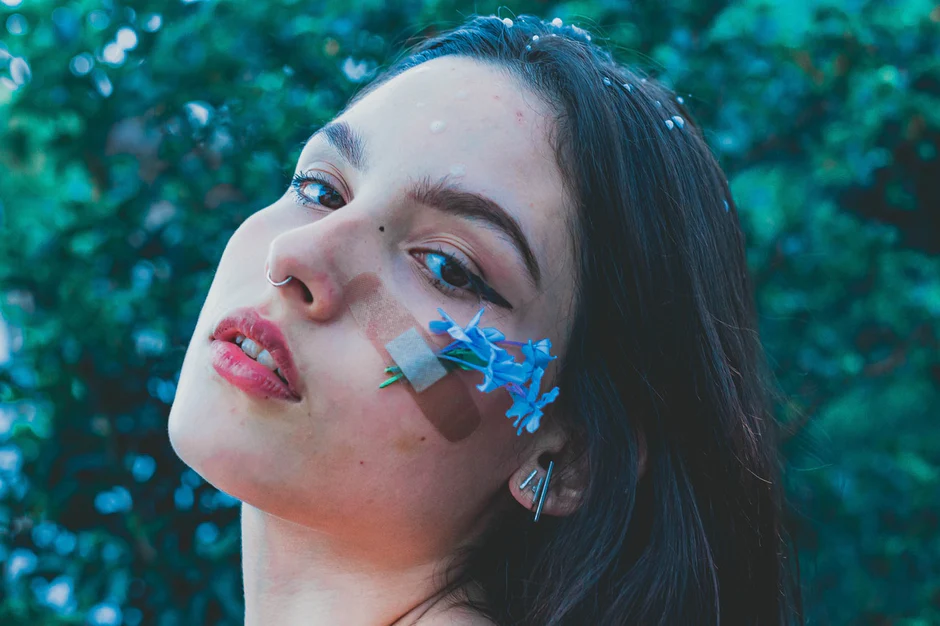Regardless of jewelry type, make sure to choose a high-quality material to avoid infections or adverse reactions. Here are some good materials to choose from: Implant grade titanium: Examples of materials suitable for nose piercing include implant grade titanium; Which is highly preferred and safe from contamination, hypo-allergic, and adaptable to the body. 14k/18k gold: The 14k/18k gold is also another material that comes in highly recommended by piercing not only experts but also doctors. Its excellent qualities of being inert thus suitable for first piercings. Medical-grade and surgical stainless steel: In addition, medical-grade and surgical stainless steel are highly endorsed due to their easy adaptability to the human body, and it also stops infections. Niobium: Niobium is another material that could be useful to make jewelry as it is non-reactive, polymeric, and has a wide range of colors. titanium nose rings

What gauge is a nose piercing? The most common gauges for nose piercings are 18G and 20G. However, piercers will often use a slightly larger needle (about 16G) to make healing easier. The larger hole allows for some swelling and prevents the healing from getting too tight as it heals. That said, make sure to listen to your piercer! Experienced piercers will be able to recommend the right gauge to avoid rejection or unnecessary complications.
Potential risks of nose piercing Before you get a piercing, it's important to know the risks. Here are some common ones:
- Infected nose piercing You can expect some swelling and redness after a piercing. But if the redness persists or gets worse and you notice extra swelling and/or pus around the area, it's likely infected.
How to treat an infected nose piercing? If the infection is mild, you can usually get rid of it by washing the piercing two to three times a day. Use isopropyl alcohol, betadine, diluted hydrogen peroxide, or another antiseptic. Applying antibiotic ointment after washing it. If the infection persists or gets worse, you may want to see a doctor.
-
Nose piercing bump Typically, a raised red bump around the nose piercing is a sign of infection. Make sure to use the treatments above to control the nose piercing bump -- if it worsens, you could develop a severe systemic infection. And as a side note, with bumps or other signs of infection, don't remove the piercing! That can cause the hole to close, sealing in the infection.
-
Keloid and scar on nose piercing Untreated infections can lead to scar tissue around the piercing. And sometimes, if left untreated, an infection will lead to a buildup of fibrous tissue that causes a scar called a keloid. Keloids are uncommon, but they can be hard to treat. If you have a noticeable keloid, be sure to consult with a dermatologist for treatment advice.
How long does it take a nose piercing to heal? As we saw above, the healing time for a nose piercing varies widely. On the shorter end, nostril piercings can heal in around two months. More complex piercings like the nasallang can take nine months or even longer to heal.
How bad does a nose piercing hurt? Since everyone has different tolerances for pain, this is a tough question to answer. It really depends on the piercing, too. Piercings that go through fleshier parts of the nose and/or cartilage are much more likely to be more painful.
How much is a nose piercing? Prices will vary widely based on location. But most nose piercings range from $25-$95. Generally speaking, more straightforward piercings like nostril piercings tend to be on the cheaper end. More complex piercings like septril piercings will usually cost more.
For more information to click here :- princess diana replica ring
Nose piercing aftercare How to clean nose piercing? Proper care is essential if you want your piercing to heal well. Generally, you should rinse the piercing with saline solution or use a special tattoo aftercare spray at least twice a day.
When can I change my nose piercing? On average, you can replace your piercing jewelry in 4-6 months. This can vary depending on the piercing type, so be sure to check in with your piercer.
How long does it take a nose piercing to close? Your piercer will probably tell you to leave your jewelry in continuously. After all, a very new nose piercing can close in minutes or hours. Piercings under a year old can close in hours or days.
Final thoughts Now that you've effectively gotten a primer on the world of nose piercings, we hope you have a better idea of which type to get. Of course, when in doubt, be sure to discuss your options with your piercer! Read More
